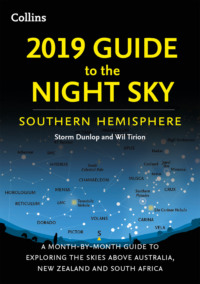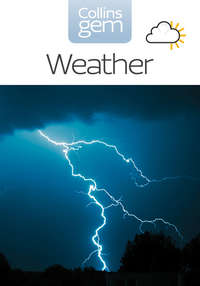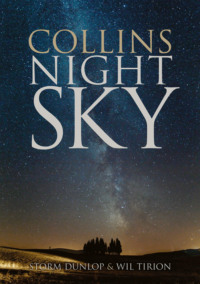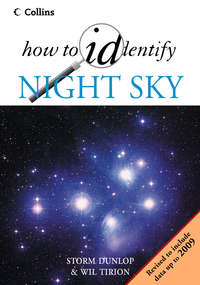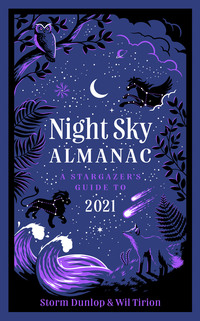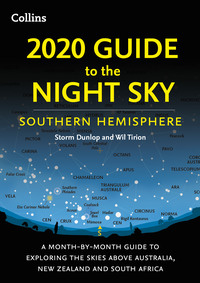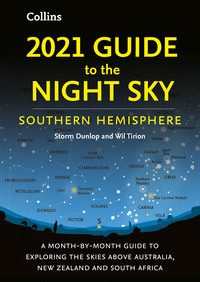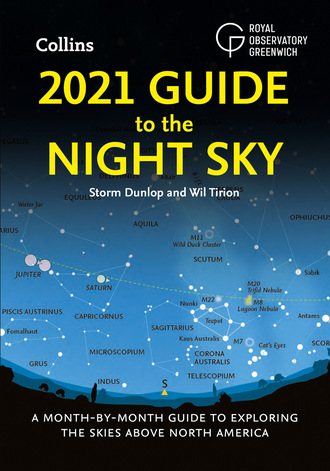
2021 Guide to the Night Sky

Measuring angles in the sky.
Messier / NGC Name Type Constellation Maps (months) — Hyades open cluster Taurus Sep. – Mar. — Double Cluster open cluster Perseus All year — Melotte 111 (Coma Cluster) open cluster Coma Berenices Jan. – Aug. M3 — globular cluster Canes Venatici Jan. – Sep. M4 — globular cluster Scorpius May – Aug. M8 Lagoon Nebula gaseous nebula Sagittarius Jun. – Sep. M11 Wild Duck Cluster open cluster Scutum May – Oct. M13 Hercules Cluster globular cluster Hercules Feb. – Nov. M15 — globular cluster Pegasus Jun. – Dec. M22 — globular cluster Sagittarius Jun. – Sep. M27 Dumbbell Nebula planetary nebula Vulpecula May – Dec. M31 Andromeda Galaxy galaxy Andromeda Jun. – Mar. M35 — open cluster Gemini Oct. – May M42 Orion Nebula gaseous nebula Orion Nov. – Mar. M44 Praesepe open cluster Cancer Nov. – Jun. M45 Pleiades open cluster Taurus Aug. – Apr. M57 Ring Nebula planetary nebula Lyra Apr. – Dec. M67 — open cluster Cancer Dec. – May NGC 752 — open cluster Andromeda Jul. – Mar. NGC 3242 Ghost of Jupiter planetary nebula Hydra Feb. – MaySome interesting objects.
The Northern Circumpolar Constellations
The northern circumpolar stars are the key to starting to identify the constellations. For anyone in the northern hemisphere they are visible at any time of the year, and nearly everyone is familiar with the seven stars of the Big Dipper: an asterism that forms part of the large constellation of Ursa Major (the Great Bear).
Ursa Major
Because of the movement of the stars caused by the passage of the seasons, Ursa Major lies in different parts of the evening sky at different periods of the year. The diagram below shows its position for the four main seasons. The seven stars of the Big Dipper remain visible throughout the year anywhere north of latitude 40°N. Even at the latitude (40°N) for which the charts in this book are drawn, many of the stars in the southern portion of the constellation of Ursa Major are hidden below the horizon for part of the year or (particularly in late summer) cannot be seen late in the night.
Polaris and Ursa Minor
The two stars Dubhe and Merak (α and β Ursae Majoris, respectively), farthest from the “tail” are known as the “Pointers.” A line from Merak to Dubhe, extended about five times their separation, leads to the Pole Star, Polaris, or α Ursae Minoris. All the stars in the northern sky appear to rotate around it. There are five main stars in the constellation of Ursa Minor, and the two farthest from the Pole, Kochab and Pherkad (β and γ Ursae Minoris, respectively), are known as “The Guards.”

Cassiopeia
On the opposite of the North Pole from Ursa Major lies Cassiopeia. It is highly distinctive, appearing as five stars forming a letter “W” or “M” depending on its orientation. Provided the sky is reasonably clear of clouds, you will nearly always be able to see either Ursa Major or Cassiopeia, and thus be able to orientate yourself on the sky.
To find Cassiopeia, start with Alioth (ε Ursae Majoris), the first star in the tail of the Great Bear. A line from this star extended through Polaris points directly toward γ Cassiopeiae, the central star of the five.
Cepheus
Although the constellation of Cepheus is fully circumpolar, it is not nearly as well-known as Ursa Major, Ursa Minor or Cassiopeia, partly because its stars are fainter. Its shape is rather like the end of a house with a pointed roof. The line from the Pointers through Polaris, if extended, leads to Errai (γ Cephei) at the “top” of the “roof.” The brightest star, Alderamin (α Cephei) lies in the Milky Way region, at the “bottom right-hand corner” of the figure.
Draco
The constellation of Draco consists of a quadrilateral of stars, known as the “Head of Draco” (and also the “Lozenge”), and a long chain of stars forming the neck and body of the dragon. To find the Head of Draco, locate the two stars Phecda and Megrez (γ and δ Ursae Majoris) in the Big Dipper, opposite the Pointers. Extend a line from Phecda through Megrez by about eight times their separation, right across the sky below the Guards in Ursa Minor, ending at Grumium (ξ Draconis) at one corner of the quadrilateral. The brightest star, Eltanin (γ Draconis) lies farther to the south. From the head of Draco, the constellation first runs northeast to Altais (δ Draconis) and ε Draconis, then doubles back southwards before winding its way through Thuban (α Draconis) before ending at Giausar (λ Draconis) between the Pointers and Polaris.

The stars and constellations inside the circle are always above the horizon, seen from latitude 40°N.
The Winter Constellations
The winter sky is dominated by several bright stars and distinctive constellations. The most conspicuous constellation is Orion, the main body of which has an hour-glass shape. It straddles the celestial equator and is thus visible from anywhere in the world. The three stars that form the “Belt” of Orion point down towards the southeast and to Sirius (α Canis Majoris), the brightest star in the sky. Mintaka (δ Orionis), the star at the northeastern end of the Belt, farthest from Sirius, actually lies just slightly south of the celestial equator.
A line from Bellatrix (γ Orionis) at the “top right-hand corner” of Orion, through Aldebaran (α Tauri), past the “V” of the Hyades cluster, points to the distinctive cluster of bright blue stars known as the Pleiades, or the “Seven Sisters”. Aldebaran is one of the five bright stars that may sometimes be occulted (hidden) by the Moon. Another line from Bellatrix, through Betelgeuse (α Orionis), if carried right across the sky, points to the constellation of Leo, a prominent constellation in the spring sky.
Six bright stars in six different constellations: Capella (α Aurigae), Aldebaran (α Tauri), Rigel (β Orionis), Sirius (α Canis Majoris), Procyon (α Canis Minoris) and Pollux (β Gemini) form what is sometimes known as the “Winter Hexagon”. Pollux is accompanied to the northwest by the slightly fainter star of Castor (α Gemini), the second “Twin”.
In a counterpart to the famous “Summer Triangle”, an almost perfect equilateral triangle, the “Winter Triangle”, is formed by Betelgeuse (α Orionis), Sirius (α Canis Majoris) and Procyon (α Canis Minoris).
Several of the stars in this region of the sky show distinctive tints: Betelgeuse (α Orionis) is reddish, Aldebaran (α Tauri) is orange and Rigel (β Orionis) is blue-white.

The Spring Constellations

The most prominent constellation in the spring sky is the zodiacal constellation of Leo, and its brightest star, Regulus (α Leonis), which may be found by extending a line from Megrez and Phecda (δ and γ Ursae Majoris, respectively) – the two stars on the opposite side of the bowl of the Big Dipper from the Pointers – down to the southeast. Regulus forms the “dot” of the “backward question mark” known as “the Sickle”. Regulus, like Aldebaran in Taurus is one of the bright stars that lie close to the ecliptic, and that are occasionally occulted by the Moon. The same line from Ursa Major to Regulus, if continued, leads to Alphard (α Hydrae), the brightest star in Hydra, the largest of the 88 constellations.
The shape formed by the body of Leo is sometimes known as the “Spring Trapezium”. At the other end of the constellation from Regulus is Denebola (β Leonis), and the line forming the back of the constellation through Denebola points to the bright star Spica (α Virginis) in the constellation of Virgo. A saying that helps to locate Spica is well-known to astronomers: “Arc to Arcturus and then speed on to Spica.” This suggests following the arc of the tail of Ursa Major to Arcturus and then on to Spica. Arcturus (α Boötis) is actually the brightest star in the northern hemisphere of the sky. (Although other stars, such as Sirius, are brighter, they are all in the southern hemisphere.) Overall, the constellation of Boötes is sometimes described as “kite-shaped” or “shaped like the letter P”.
Although Spica is the brightest star in the zodiacal constellation of Virgo, the rest of the constellation is not particularly distinct, consisting of a rough quadrilateral of moderately bright stars and some fainter lines of stars extending outwards.
The Summer Constellations

On summer nights, the three bright stars Deneb (α Cygni), Vega (α Lyrae) and Altair (α Aquilae) form the striking “Summer Triangle”. The constellations of Cygnus (the Swan) and Aquila (the Eagle) represent birds “flying” down the length of the Milky Way. This part of the Milky Way contains the Great Rift, an elongated dark region, where the light from distant stars is obscured by intervening dust. The dark Rift is clearly visible even to the naked eye.
The most prominent stars of Cygnus are sometimes known as the “Northern Cross” (as a counterpart to the “Southern Cross” – the constellation of Crux – in the southern hemisphere). The central line of Cygnus through Albireo (β Cygni), extended well to the southwest, points to Sabik (η Ophiuchi) in the large, sprawling constellation of Ophiuchus (the Serpent Bearer) and beyond to Antares (α Scorpii) in the constellation of Scorpius. Like Cepheus, the shape of Ophiuchus somewhat resembles the gable-end of a house, and the brightest star Rasalhague (α Ophiuchi) is at the “apex” of the “gable”.
A line from the central star of Cygnus, Sadr (γ Cygni) through δ Cygni, in the northwestern “wing” points towards the Head of Draco, and is another way of locating that part of the constellation. Another line from Sadr to Vega indicates the central portion, “The Keystone”, of the constellation of Hercules. An arc through the same stars, in the opposite direction, points towards the constellation of Pegasus, and more specifically to the “Great Square of Pegasus”.
Aquila is less conspicuous than Cygnus and consists of a diamond shape of stars, representing the body and wings of the eagle, together with a rather faint star, λ Aquilae, marking the “head”. Lyra (the Lyre) mainly consists of Vega (α Lyrae) and a small quadrilateral of stars to its southeast. Continuation of a line from Vega through Altair indicates the zodiacal constellation of Capricornus.
Конец ознакомительного фрагмента.
Текст предоставлен ООО «ЛитРес».
Прочитайте эту книгу целиком, купив полную легальную версию на ЛитРес.
Безопасно оплатить книгу можно банковской картой Visa, MasterCard, Maestro, со счета мобильного телефона, с платежного терминала, в салоне МТС или Связной, через PayPal, WebMoney, Яндекс.Деньги, QIWI Кошелек, бонусными картами или другим удобным Вам способом.




